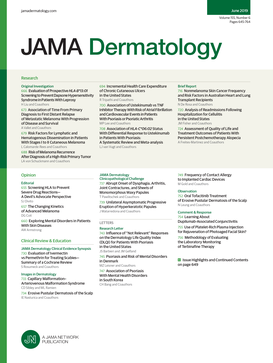Key Points
Question What are the costs and cost-effectiveness of chronic urticaria (CU) management strategies?
Findings In this systematic review including 17 unique studies, based on 2023 US dollars, median annual cost estimations for CU ranged from $5621 to $6933. Biologic omalizumab, 300 mg, for H1 antihistamine–refractory chronic spontaneous urticaria (CSU) appears to be cost-effective from a third-party payer’s perspective.
Meaning In this review, biologic omalizumab, 300 mg, for H1 antihistamine–refractory CSU offered good value for money in US health care services; price negotiations and rebates of high-cost drugs may help promote sustainability and more effective health care allocation for CU.
Abstract
Importance Although treatment for chronic urticaria (CU) has improved over the past decades, evidence regarding costs and net benefits associated with these treatment strategies have yet to be comprehensively characterized and synthesized.
Objective To summarize the cost and cost-effectiveness of CU management strategies.
Evidence Review An extensive systematic literature search of 6 databases (MEDLINE, Embase, PubMed Cochrane, Scopus, and CINAHL) and gray literature sources, without language restriction, was conducted and updated to March 23, 2024. Articles that performed cost analysis or full economic evaluation among patients with CU were included. Two reviewers independently extracted data, such as annual costs of health care services or incremental cost-effectiveness ratio (ICER) per quality-adjusted life-year (QALY). All monetary values were converted and inflated to 2023 US dollars. Evidence-based synthesis for health benefit was judged using the Evidence Rating Matrix by the Institute for Clinical and Economic Review.
Findings Seventeen unique studies (11 cost analysis studies and 6 full economic evaluations) were included. With the wide variation in health care resources, services that included biologic omalizumab utilization had higher annual health care cost estimations for CU management than services that did not include omalizumab prescription (median [IQR] cost, $6933 [$5988-$8717] vs $5621 [$2488-$8754]). The biologic omalizumab, 300 mg, for H1 antihistamine–refractory chronic spontaneous urticaria (CSU) (3 studies) was found to have a median (IQR) ICER of $89 005 ($36 058-$145 694) per QALY (evidence rating as incremental or better; moderate certainty with substantial net health benefit). Routine laboratory testing among patients with CSU with otherwise normal histories and physical examination findings (1 study) had ICERs ranging from $1 427 928 to $1 950 524 per QALY (evidence rating as comparable or inferior; moderate certainty that the net health benefit is inferior).
Conclusions and Relevance With limited evidence of cost-effectiveness, biologic omalizumab, 300 mg, for H1 antihistamine–refractory CSU was found to be cost-effective in US health care services at the willingness to pay threshold of $150 000 per QALY. Meanwhile, routine laboratory testing among patients with CSU without compelling indication was not cost-effective. Future studies in more diverse CU populations and resource settings are needed to fill evidence gaps.


No comments:
Post a Comment